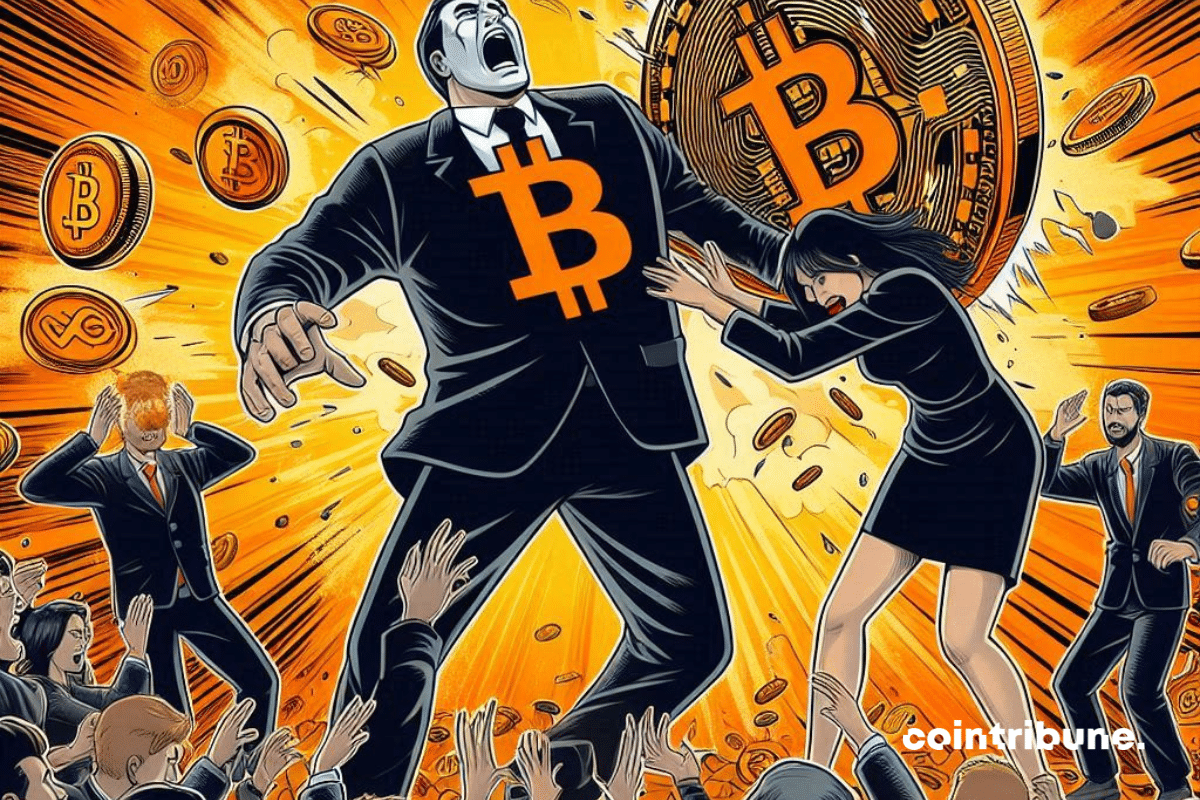The Bitcoin ecosystem is evolving beyond just being a decentralized currency. In 2024 and heading into 2025, the Bitcoin network is undergoing rapid transformation. With the rise of Bitcoin Ordinals, DeFi on Bitcoin, the Runes protocol, Layer 2 scalability solutions, and Bitcoin NFTs, the network is seeing an explosion of innovation. Simultaneously, concerns over vulnerabilities and critical CVEs (Common Vulnerabilities and Exposures) have also surfaced.
🔶 1. Bitcoin Ordinals: A New Age of Digital Art on BTC
Bitcoin Ordinals, introduced in early 2023 by Casey Rodarmor, brought the concept of inscriptions to Bitcoin—allowing users to embed data such as text, images, and even video directly onto individual satoshis. This has essentially turned Bitcoin into a host for NFTs without needing sidechains or tokens.
Key Highlights:
- Each satoshi can carry a unique identifier and attached metadata.
- Unlike Ethereum NFTs, Ordinals live on-chain in Bitcoin’s base layer.
- This has led to a surge in demand for block space, creating new opportunities for miners.
Why It Matters in 2025:
Ordinals have gained institutional interest and continue to drive up Bitcoin transaction fees—an economic game changer for the post-halving mining economy.
🔶 2. Bitcoin DeFi: The Next Frontier
While Ethereum has long dominated the DeFi sector, Bitcoin DeFi is gaining momentum through innovative smart contract platforms like Stacks, Rootstock (RSK), and BitVM.
Key Projects to Watch:
- Stacks (STX): Enables smart contracts and dApps on Bitcoin.
- RSK: An EVM-compatible sidechain that allows DeFi on Bitcoin.
- BitVM: A new framework to bring Ethereum-style computation to Bitcoin natively.
Why It’s Trending:
DeFi on Bitcoin opens up lending, borrowing, and decentralized trading opportunities while retaining Bitcoin’s robust security and decentralization.
🔶 3. Bitcoin Runes Protocol: A Simple Fungible Token Standard
Bitcoin Runes, developed by Casey Rodarmor (also the creator of Ordinals), is a minimalistic, UTXO-based protocol for fungible tokens on Bitcoin.
Key Features:
- Designed to avoid the bloat and inefficiencies of BRC-20 tokens.
- Operates on Bitcoin’s native scripting language without relying on complex smart contracts.
- Launch coordinated with Bitcoin’s halving in April 2024.
Why It Matters:
Runes could become the standard for fungible assets on Bitcoin, unlocking token economies without compromising the blockchain’s core principles.
🔶 4. Bitcoin Layer 2: Scaling Solutions Take Off
With Bitcoin’s base layer facing scalability limitations, Layer 2 technologies like the Lightning Network, Ark Protocol, and ZeroSync are stepping in to enable faster, cheaper transactions.
Notable Developments:
- Lightning Network adoption grows in regions with unstable fiat currencies.
- Ark Protocol offers private, scalable payments using “virtual UTXOs.”
- ZeroSync brings zero-knowledge proofs to Bitcoin to improve validation efficiency.
Why It’s Crucial:
Layer 2 solutions will be essential for Bitcoin to scale to billions of users without congesting the main chain.
🔶 5. Bitcoin NFTs: Beyond Art
Bitcoin NFTs, born through Ordinals, are expanding beyond digital art to represent real-world assets, in-game items, and even legal contracts.
Trends in 2025:
- Digital identity and tokenized collectibles are moving to Bitcoin.
- Integration with metaverse and gaming platforms.
- Bitcoin-based NFT marketplaces like Magic Eden are gaining popularity.
Why It Matters:
Bitcoin NFTs benefit from BTC’s unmatched security, offering a long-term storage solution for immutable digital assets.
🔶 6. Bitcoin Vulnerabilities 2025: A Growing Attack Surface
As Bitcoin’s functionality expands, so does its attack surface. In 2025, over 13% of public Bitcoin nodes were reported to be vulnerable to unpatched bugs, raising concerns among developers and security experts.
Common Risks:
- Outdated node software (e.g., Bitcoin Core versions prior to 22.x).
- Incomplete SegWit implementation.
- Improper validation of inscriptions or script limits.
Why It’s Alarming:
Even as Bitcoin becomes more programmable, it must maintain rigorous standards for consensus and validation to avoid catastrophic forks or exploits.
🔶 7. Bitcoin Bug CVE Alerts: Security in the Spotlight
Several CVEs (Common Vulnerabilities and Exposures) were issued in 2024–2025, targeting both node software and associated infrastructure.
Notable CVEs:
- CVE-2024-5050: Critical vulnerability in mempool transaction validation.
- CVE-2024-6781: Remote denial-of-service (DoS) exploit found in Bitcoin Core.
- CVE-2025-1120 (Speculative): Vulnerability related to inscription size limits in Ordinals.
Developer Response:
- Regular updates and patch releases from the Bitcoin Core team.
- Increased community focus on full-node hygiene and patch management.
Why It Matters:
Security remains the backbone of Bitcoin. Transparent disclosure and quick patching of bugs protect the entire ecosystem—from miners and exchanges to individual HODLers.
Conclusion
The 2024–2025 period is shaping up to be a revolutionary time for Bitcoin. No longer just a “digital gold,” Bitcoin is now home to NFTs, DeFi applications, fungible token standards, and smart contract layers. While this growth is exciting, it also comes with heightened security challenges and infrastructure risks.
As Bitcoin’s role in the Web3 ecosystem expands, staying updated on emerging technologies like Ordinals, Runes, and Layer 2—while remaining vigilant against vulnerabilities and CVEs—will be key for developers, investors, and users alike.
